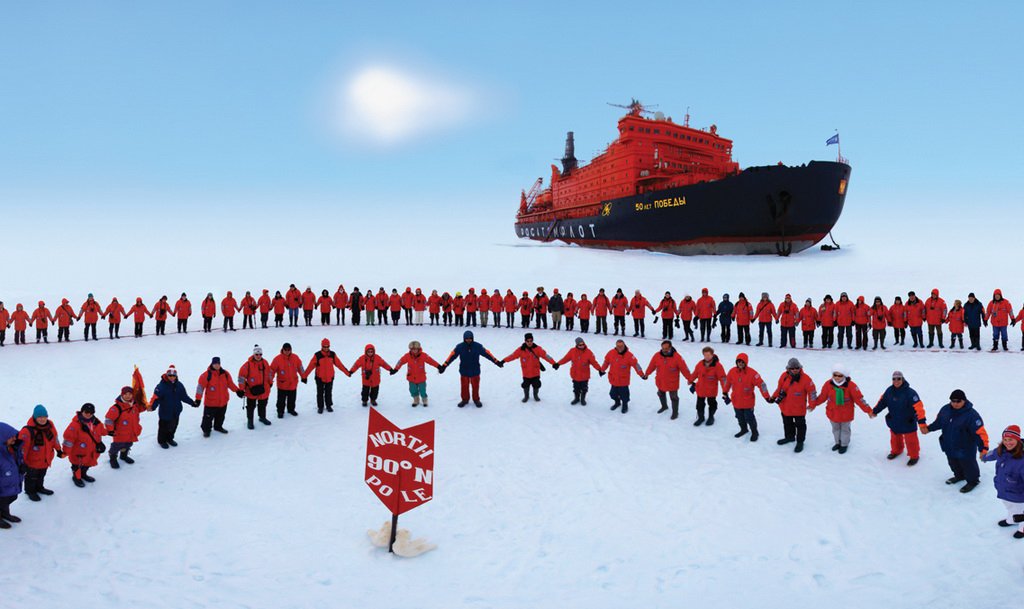
Top 10 Interesting Things You Didn’t Know about the North Pole

The North Pole. What do you think of when you say those words? A frozen expanse of adventure awaiting you? Icebergs and polar bears? Does the idea of a North Pole cruise sound like a fun time for you?
If so, then this article is for you! The North Pole is much more than a tourist destination, and we have listed here ten things you may not know about it. Our goal is to excite you even more about your prospective visit to this magical place. So, get your sea legs ready and take a walk with us as we take you on a little ride into discovering the many wonders of the North Pole!
-
There Are Multiple North Poles
You read that right! There is no one, single North Pole. There are two. The first among these is the Geographic North Pole, what most of us think about when we hear the term. It marks the top of the Earth. Then there is the magnetic North Pole, where all the compasses point downwards. This point changes slightly every day based on what happens under the crust.
-
The North Pole Was Named after Bears
Well, almost. The word ’Arctic’ comes from the Greek word arktikos, which can mean both north and bears. Maybe this has to do with the constellations Ursa Major and Ursa Minor — Great Bear and Little Bear respectively. Both constellations are easy to spot in the northern hemisphere.
Interestingly, Antarctica comes from the combination of the Greek words ant and arktikos. Together, they mean the opposite of the north. Or, opposite of a bear, since there are no bears on the South Pole. Food for thought!
-
There Is No Land on the North Pole
If you thought there was land under all that ice, think again. There is no land on the North Pole. The ice we see is actually an ice sheet that floats on the North Sea. Its elevation is only about a foot from sea level.
-
There Are No Permanent Settlers
The polar ice sheet is constantly moving with the ocean currents, shifting farther and farther outwards. This is why there are no permanent settlements on the North Pole. Stay in a camp for too long and you’ll just drift out to sea on an iceberg!
-
The North Pole Is Definitely Warmer Than You Realize
You read that correctly. The summer months have an average temperature of about 32 degrees Fahrenheit, while the winter causes temperatures to plummet to about -40 degrees Fahrenheit.
Why is this? It’s because the North Pole is an ocean surrounded by land. While the water underneath the ice is cold, it’s still warmer than the ice. And being only a foot above sea level helps keep the temperature from going down too much. But while it isn’t the coldest place on Earth, you still need to dress the part.
-
No Country Can Claim the North Pole as Its Territory
Since the North Pole is situated in international waters, it does not belong to any country. Of course, this has not stopped countries from trying to claim it as such.
This behavior is understandable. Many surveys over the years have shown that about 22% of the world’s undiscovered oil resources lie beneath the Arctic seabed. Due to global warming and the melting of polar ice caps, access to these resources has gotten easier. As climate change gets worse, it will only tempt daring industrialists to tap into this resource more.
-
The North Pole Has a Celestial Marker
We’ve mentioned the constellations Ursa Major and Ursa Minor before. Nestled inside the Little Bear, however, is a very special star. It goes by the name of Polaris, or as we like to call it, the North Star. It sits directly over the North Pole — 434 light-years away.
For years, celestial navigation — using heavenly bodies like stars and the moon to navigate — has depended very heavily on the North Star, and with good reason! The North Star just never moves. When you’re drifting in the ocean, you need something constant to keep you anchored. Sailors across millennia have used the North Star’s position to orient themselves. To go back home.
-
The Sun Rises and Sets Only Once per Year
At the poles, the sun only rises once and sets once. The sun rises on the Spring Equinox in March and sets on the Winter Equinox in December. This means that for the rest of the year, the sun is either always present, or it’s completely dark!
-
It Acts as an Important Shipping Lane
Icebreakers are ships capable of smashing through the ice sheet. They travel across the North Pole, carrying both cargo and military. In fact, shipping companies can save upwards of $500,000 if they use the Northern Sea to travel between Asia and America instead of the Panama Canal.
-
The North Pole Is Shrinking
Climate change is real, folks. The North Pole is a prime example. It is estimated that within the next 50 years, much of the thick polar ice would melt, rising sea levels manifold.
So, enjoy it while it lasts, brave adventurer. The North Pole is one of the very few places on Earth completely free of the human touch. It is, as yet, pristine, and if you should visit it, make sure to give it the respect it deserves.



































